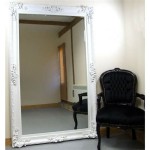How to Mirror Your iPad to a Samsung Smart TV
Mirroring an iPad to a Samsung Smart TV allows users to display content from their mobile device directly on a larger screen. This functionality enhances various activities, including presentations, video viewing, gaming, and sharing photos with a group. Several methods exist for achieving this connection, each with its advantages and drawbacks. This article provides a comprehensive guide to the different techniques available, outlining the necessary steps and considerations for successful iPad mirroring to a Samsung Smart TV.
Before initiating the mirroring process, it is crucial to ensure that both the iPad and the Samsung Smart TV are connected to the same Wi-Fi network. This is a fundamental requirement for most wireless mirroring methods. Additionally, verifying that both devices are running the latest software versions is recommended. Outdated software can sometimes lead to compatibility issues and hinder the mirroring process. Restarting both devices can also resolve temporary glitches and ensure a smoother connection.
Using AirPlay 2 for Seamless Mirroring
AirPlay 2 is Apple's proprietary wireless streaming protocol, designed to facilitate seamless audio and video sharing between Apple devices and compatible smart TVs. Many Samsung Smart TVs manufactured since 2018 support AirPlay 2, making it a straightforward option for iPad mirroring. This method offers a high-quality streaming experience with minimal latency.
To initiate mirroring via AirPlay 2, first access the Control Center on the iPad. This is typically done by swiping down from the top-right corner of the screen (on iPads without a Home button) or swiping up from the bottom edge (on iPads with a Home button). Within the Control Center, locate the "Screen Mirroring" icon, which resembles two overlapping rectangles. Tap this icon to display a list of available AirPlay 2-compatible devices on the network.
Select the Samsung Smart TV from the list. A passcode may appear on the TV screen. If prompted, enter this passcode on the iPad to establish the connection. Once the connection is established, the iPad's screen will be mirrored onto the Samsung Smart TV. Any content displayed on the iPad, including apps, photos, videos, and presentations, will be visible on the TV screen. To stop mirroring, return to the Control Center, tap the "Screen Mirroring" icon again, and select "Stop Mirroring."
AirPlay 2 offers several advantages, including ease of use and high-quality streaming. However, it requires that the Samsung Smart TV be compatible with AirPlay 2. If the TV does not support AirPlay 2, alternative methods, as described below, must be considered. Also, it's advisable to minimize interference from other wireless devices to ensure a stable and uninterrupted connection.
Utilizing Third-Party Mirroring Applications
Several third-party applications are available on the App Store that facilitate screen mirroring from an iPad to a Samsung Smart TV. These applications often provide broader compatibility than AirPlay 2, supporting older Samsung Smart TV models or those that do not natively support Apple's mirroring protocol. Popular options include apps like "AirBeamTV," "MirrorMeister," and "Replica."
The setup process for these applications typically involves downloading and installing the app on the iPad. Once installed, the app will guide the user through the connection process. This usually involves ensuring that both the iPad and the Samsung Smart TV are on the same Wi-Fi network and then allowing the app to scan for available devices. The user then selects the Samsung Smart TV from the list of detected devices within the app.
Many of these applications require a corresponding app to be installed on the Samsung Smart TV. This is often available through the Samsung Apps store on the TV. The process for installing and launching such apps will vary depending on the specific Smart TV model and software version. Follow the on-screen instructions provided by the app developer to install the receiver app on the TV.
Once both apps are installed and running, the connection between the iPad and the Samsung Smart TV can be established. The mirroring quality and performance of these applications can vary depending on the app and the network conditions. It is therefore advisable to test several different applications to determine which one provides the best performance and compatibility for the specific Samsung Smart TV model. Also, be aware that some apps offer limited free trials or require a subscription for full functionality.
The advantages of using third-party mirroring applications include broader compatibility and the potential for specialized features. However, their performance is contingent on app quality and network stability. Users should scrutinize app reviews and ratings before committing to a particular application.
Employing an HDMI Adapter for a Wired Connection
For a more stable and potentially higher-quality connection, an HDMI adapter can be used to directly connect the iPad to the Samsung Smart TV. This method bypasses the need for a wireless network and eliminates potential interference issues. Apple offers a Lightning Digital AV Adapter that is compatible with most iPads that have a Lightning port. iPads with a USB-C port can use a USB-C Digital AV Multiport Adapter.
To establish a wired connection, plug the Lightning Digital AV Adapter (or USB-C equivalent) into the iPad's charging port. Then, connect an HDMI cable from the adapter to an available HDMI port on the Samsung Smart TV. Once the connection is made, switch the TV's input source to the corresponding HDMI port. This is typically done using the TV's remote control and navigating to the "Source" or "Input" menu.
The iPad's screen should now be mirrored onto the Samsung Smart TV. The adapter will transmit both video and audio signals, providing a complete mirroring experience. This method is particularly useful for presentations, gaming, or any activity where a stable and reliable connection is essential. It avoids potential lag or disconnections associated with wireless mirroring solutions.
The primary advantage of using an HDMI adapter is its reliability and potentially superior picture quality. The drawback is the need for physical cables and the limited mobility it provides. However, for situations where stability and quality are paramount, the HDMI adapter offers a solid solution.
In some cases, adjustments to the iPad's display settings may be necessary to optimize the mirroring experience. This includes resolution and aspect ratio settings. The user can access these settings through the iPad's "Settings" app, under "Display & Brightness," and then adjust the "Video Output" settings. Experimenting with different settings can help achieve the best possible picture quality on the Samsung Smart TV.
Another crucial factor to consider is the HDMI cable itself. Using a high-quality HDMI cable is recommended to ensure optimal signal transmission and prevent any potential issues with picture or sound quality. Invest in a reputable brand and ensure that the cable is compatible with the desired resolution and refresh rate. For 4K content, an HDMI 2.0 or later cable is essential.
Troubleshooting common issues when mirroring an iPad to a Samsung Smart TV often involves checking the network connection, software versions, and hardware compatibility. If using AirPlay 2 or a third-party app, verify that both devices are connected to the same Wi-Fi network and that the network signal strength is adequate. If using an HDMI adapter, ensure that the cable is properly connected and that the TV's input source is correctly set. Restarting both the iPad and the Samsung Smart TV can also resolve many temporary glitches.
If the mirroring connection is unstable or frequently disconnects, try moving the iPad closer to the Wi-Fi router or reducing interference from other wireless devices. If the picture quality is poor, adjust the iPad's display settings or try using a higher-quality HDMI cable. If the audio is not working correctly, check the TV's volume settings and ensure that the correct audio output is selected. Consult the user manuals for both the iPad and the Samsung Smart TV for more detailed troubleshooting information.
Mirroring an iPad to a Samsung Smart TV provides various options to suit different needs and preferences. AirPlay 2 offers a seamless wireless experience for compatible devices, while third-party apps provide broader compatibility. An HDMI adapter offers a stable and reliable wired connection. By understanding the advantages and limitations of each method, users can choose the best approach for their specific situation and enjoy their iPad content on a larger screen.

Top 4 Methods To Mirror Ipad Samsung Tv

How To Mirror An Ipad A Samsung Tv

How To Mirror An Ipad A Samsung Tv

Ipad Screen Mirroring Not Working Quick Solutions Here

How To Mirror Ipad Samsung Smart Tv

Top 4 Methods To Mirror Ipad Samsung Tv

Mirror Iphone Or Ipad To Your Samsung Tv

How To Screen Mirroring Iphone Samsung Tv

How To Mirror Your Iphone Or Ipad On A Smart Tv

How To Mirror Ipad Iphone Samsung Tv








